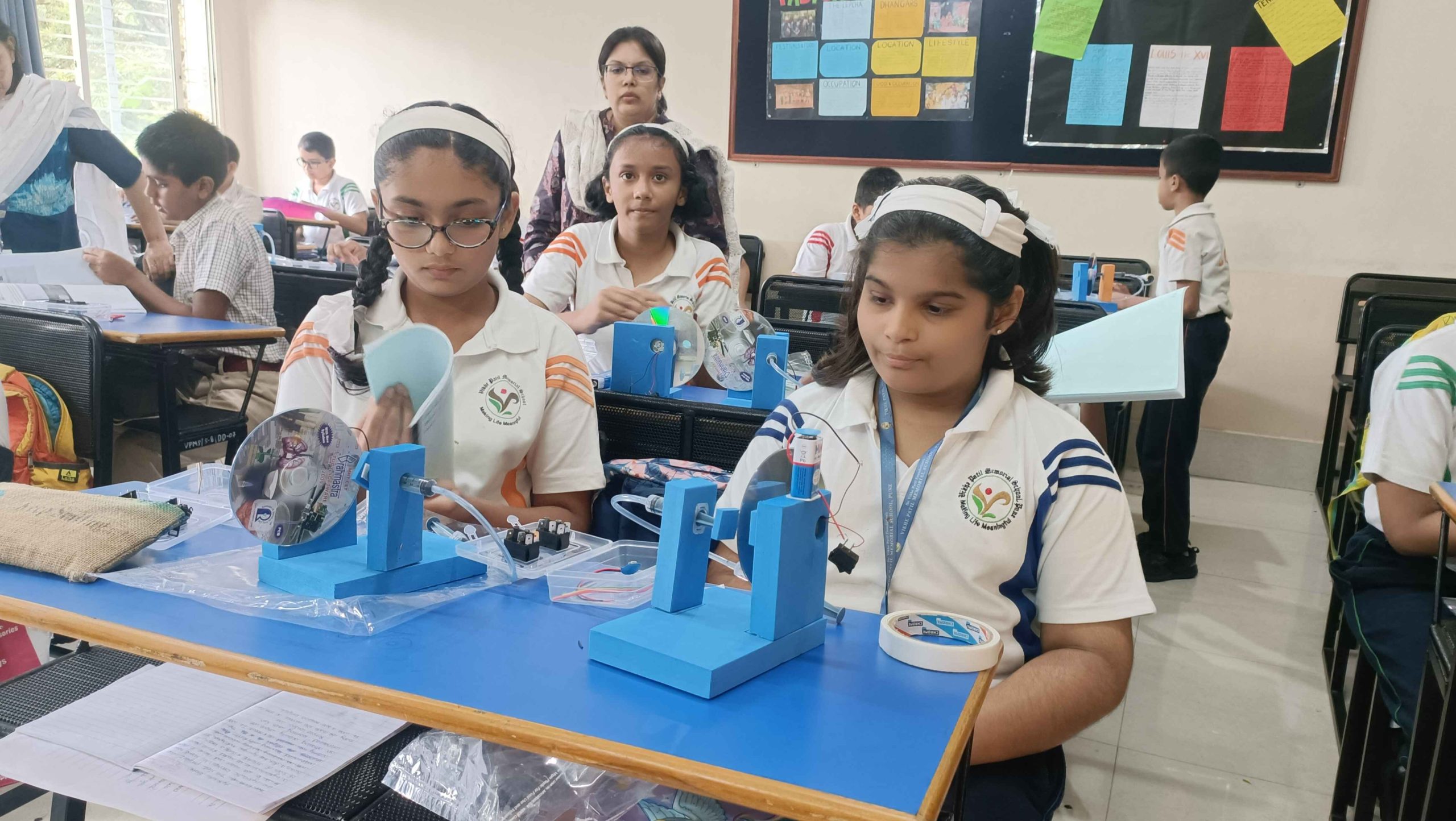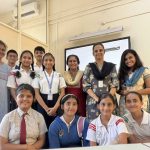
ROBOTICS CLUB 2024-25
REPORT- 13th July 2024
The third activity of the Robotics Club was held on 13 th July 2024. The club members along with the teachers assembled in Std. X classrooms for the activity. Resource persons from the TinyBots conducted the activities for the students.
The activities of the Robotics Club were held at three levels:
Level 1
1. Activity 1: Hydraulic Brake
Working:
When the switch is pressed the motor works and starts spinning the CD. Here the CD resembles the wheel of vehicle. When the plunger of the lower syringe is pressed, it pushes the plunger of the upper syringe towards the rotating CD and reduces its speed. If pressed further it stops the CD from rotating. Here Pascal’s law(hydraulic pressure) is brought into use. It states that the external pressure applied to a fluid in a closed vessel is uniformly transmitted throughout the fluid. In this model the fluid (water) is pushed in a syringe which in turn tries to find space and hence moves anything which comes in its path.
Activity 2: Remote controlled Robo racer car
The Remote Control Robo Car facilitates remote-controlled movement using an Arduino and TSOP Sensor Module, offering versatility in directional navigation and visual feedback through LEDs.
Working:
The motors are responsible for moving the robot.
Forward: Press both switches together in upper direction
Reverse: Press both switches together in downward direction
Left & Right : One switch up and other down.
Level 2
Activity 1: Pooja/Aarti robot
Arti Machine, a harmonious blend of tradition and innovation that brings the sacred ritual of Arti to the modern era.
Working:
The motor’s shaft rotates which in turn rotates the Z shape clamp. The L shape clamp needs to be stationary. The red LED resembles the Diya. The fixture of 2 nuts used to fix the 2 clamps together needs to be loose. The Diya would overturn in case the nuts are tight. In case the robot works in anticlockwise direction, we need to swap the battery connector wires.
Activity 2: Automatic street light system
The students were introduced to automatic street light control system by using an LDR and Arduino UNO development board. The objective of this activity was to solve the problem associated with the street lights that continue to remain on during the daytime or early in the morning when there is no need for artificial light.
Working:
This circuit is based on a light sensor named LDR (Light Depended Resistor), a variable resistor in which the resistance varies according to the light intensity falling on it.
The LDR and the resistor form a voltage divider circuit. When the environmental light falls on the LDR (sensor) the transistor is off. So the LED is also off. When there is darkness the base of the transistor gets the current and it switches on. This in turn switches on the LED.
Level 3
Activity 1: Arduino programming based running LCD display
In this activity, students learnt how to use an LCD (Liquid Crystal Display) with Arduino. LCDs like these are prevalent and largely used in electronics projects as they are good for displaying data.
Working:
The code begins by including the Liquid Crystal library and defining the pin configurations for the LCD screen. It defines a string message to be displayed on the LCD and calculates its length.
In the setup function, it initializes the LCD with the specified number of columns and rows.
In the loop function: It clears the display.
It prints the message starting from different positions to create a running display effect. The message is scrolled from right to left, one character at a time, creating the illusion of movement. The loop repeats indefinitely, creating a continuous running display effect.
Active involvement of students and teachers was seen throughout the activities.
It was a great hands-on learning experience for students and teachers.
Report by – Mrs. Anjali Naik
Mrs. Santosh Wadhwa




